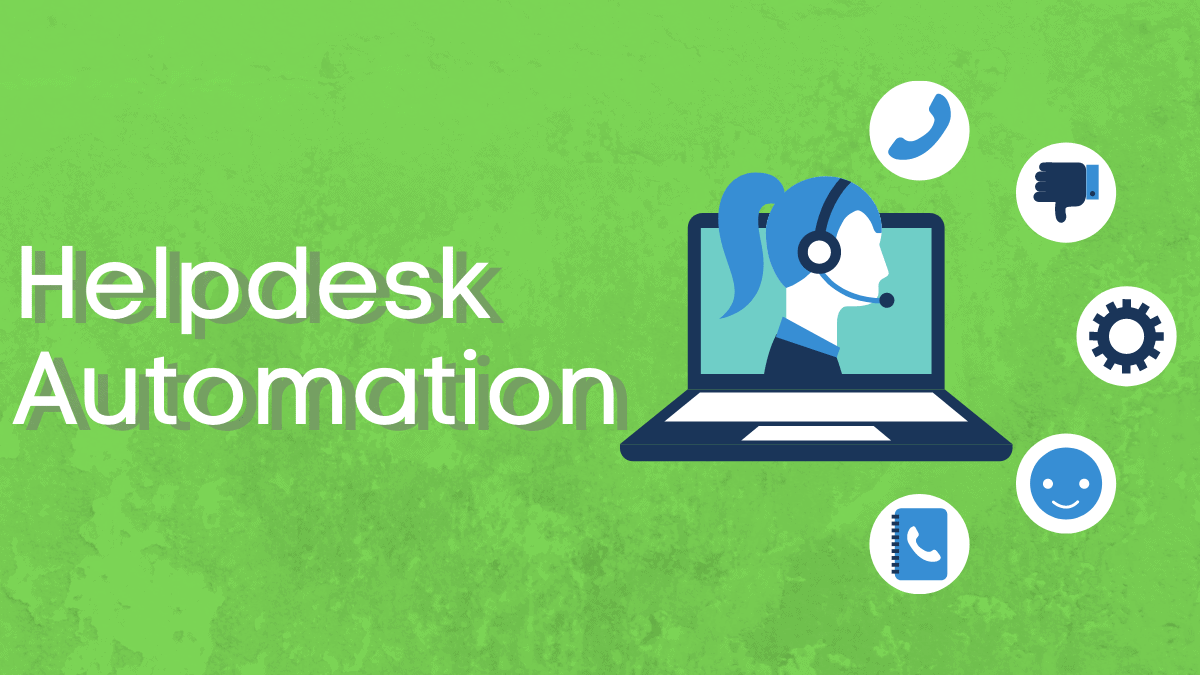Post summary:
- Ticketing is no longer optional – it’s a must for any inbound call center
- A little automation goes a long way, making Helpdesks far more versatile
- With the right mix of tools, that automation is now within easy reach
Effective Helpdesk ticketing systems have been a revolution in customer service quality. They’ve become an essential feature in the most effective contact centers.
Businesses which don’t adopt a ticketing system quickly fall behind, missing some issues or massively delaying their response.
But there’s a catch (sort of). A really great Helpdesk ticketing system shows you how many issues there really are to deal with. It enables you to take a big step back, understanding the full picture.
And when you do that, you might think… how on earth are we going to answer all of these queries?!
The answer is to automate as many of those responses as possible. In the post we’ll show you just how to do that.
(Another answer is to cut the number of calls you’re getting. Find out how in ‘Deflect more calls – 3 strategies for your contact center.’)
Why you absolutely need a ticketing system!
Just in case you’re not already sold, here are a few compelling reasons that your contact center needs a ticketing system.
It keeps relevant caller data close at hand. The best ticketing systems always give the agent up-to-date customer data. That includes their background and purchase history, as well as the history of the current issue.
(It’s even better if you can also integrate call center CRM!)
It prevents interactions getting ‘lost’. As someone who used to work in a contact center that used the pen paper method of data collection, you can take my word for it; it’s terrible! Ticketing maintains an accurate and standardized overview.
It prioritizes requests. If the fire department gets a call about a cat stuck in a tree, and then another about a burning building, they don’t address those calls in chronological order! Ticketing systems use contextual information to prioritize issues.
It makes collaboration far easier. Plenty of issues require specialist or senior input. Forwarding a digital ticket to the right team is far easier – and more transparent – than walking around asking for input.
It’s super fast. This benefit alone makes ticketing systems worthwhile. Tickets bounce through your cloud helpdesk software instantaneously, land with the right people and can get resolved far more quickly.
(Need to speed up? Here are ‘4 ways to slash AHT with call center IVR’.)
What kinds of processes do you need to automate?
Obviously, a lot of what you expect your Helpdesk to do is already automated. Platforms like Zendesk, Freshdesk and Zoho Desk have extensive automation capabilities covering a lot of your needs.
But there are also situations that require deeper systems integration. That’s especially true when you want to automate more than the progress of the ticket – when you want to automate the response as well.
Here are a few examples.
VIP abandoned a call? Automate the callback. Abandoned calls are always worth a closer look – especially when that call is from a VIP. So why not create a ticket for the abandoned call that automatically schedules an outbound call from an agent?
Out of hours contact attempt? Automated SMS. Call a contact center outside of their opening hours and you’ll typically get a recorded message. That’s a good starting point, but why not back it up with an outbound SMS with links to self-service tools?
Missed your service SLA? Automated email. It’s frustrating when your contact volume prevents you from closing tickets within your SLA. The best thing you can for your customers is to own the error. Send a simple email apology, letting them know you haven’t forgotten them.
How can you automate processes in your cloud helpdesk software?
It’s easy to say that you should do these things. But where do you start?
First, you’ll need the right tools.
Here are the specific challenges we’re looking to overcome:
- You need the ability to create new, custom tickets in your Helpdesk
- You need to connect the Helpdesk with other call tools so it can schedule follow-ups
- You need to create the automated process which performs that action, quickly and easily – ideally without needing to write any code
Create new, custom tickets
Basically, your platform either has this feature or it doesn’t. babelforce does.
Of course, most Helpdesks will let you rename fields or define other elements of tickets. But that doesn’t matter very much if the Helpdesk itself isn’t integrated with surrounding systems.
For example, you can’t create tickets from inbound SMS if the SMS system has no connection to the Helpdesk. (And definitely can’t automatically send an outbound SMS!)
Connect the Helpdesk with other tools
So, you know you need to join the Helpdesk up with… well, as many other tools as possible. (Think IVR, CRM, outbound dialer and so on.)
You can achieve this with API integration. If you’re shaky on APIs, think of them as the bridges between different systems. They allow data to pass easily from one system to another – in effect, they let lots of different systems operate as one unified system.
The upshot is that the creation of a ticket in your Helpdesk can trigger any kind of automated follow-up.
(For more information, read ‘What are APIs and how do they enhance contact center service?’)
Create the automated process
Final obstacle – where does the automated process come from? Sure, any talented development team could build the automation you’re after.
But that route is going to be laborious, costly and time consuming.
The only way to create contact center processes in a timely and affordable way is to use a No-Code automation platform.
No-Code platforms enable businesses to create complex automated tasks without technical skills. Simple tools let users define which triggers should relate to which automated processes.
Why are contact centers switching to No-Code?
Earlier in this post we looked at three situations where you might want to place a call, or send an email or SMS.
If you have a good, in-house dev team, they should be able to create that automation within two weeks.
But:
- You’ll have to wait for them to be available, which could also take weeks.
- You’ll have to brief them according to their internal process.
- If you need to update the process after it has been deployed, that will also take several weeks!
So you’re looking at what, half a year to make these very simple processes?
Surely we can do better…
Using babelforce, you could create all three of these processes, on your own, over a few afternoons.
This is absolutely the simplest way to do a complex thing! And it can give your cloud helpdesk software an enormous upgrade to boot.





